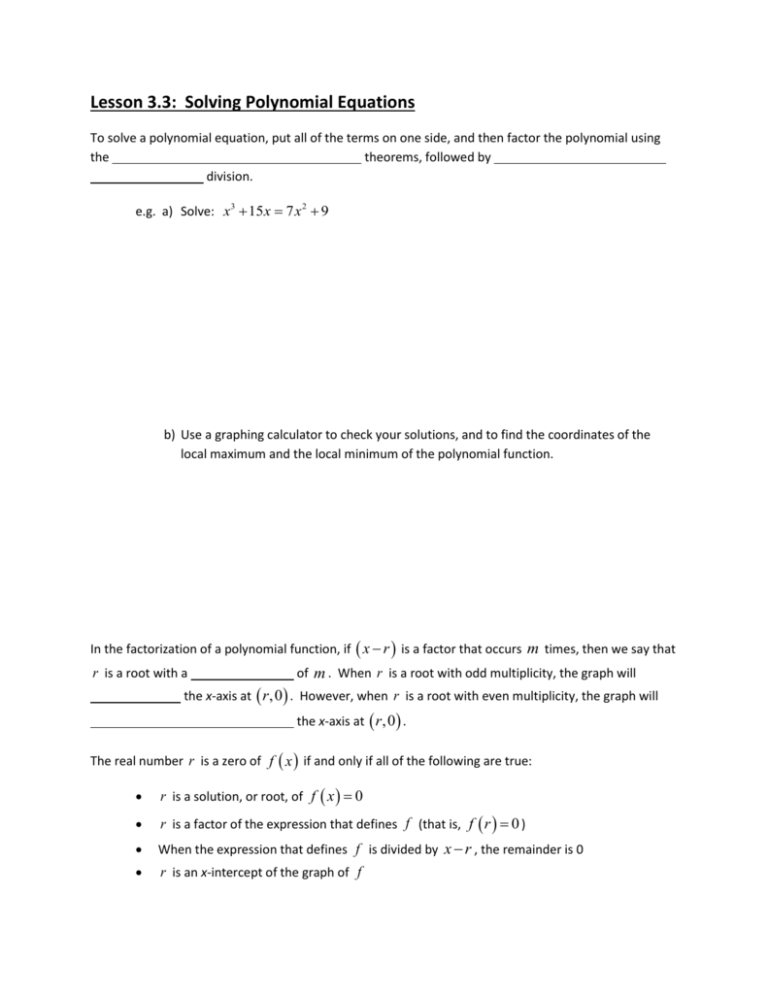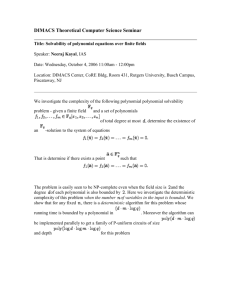Lesson 3.3: Solving Polynomial Equations
advertisement

Lesson 3.3: Solving Polynomial Equations To solve a polynomial equation, put all of the terms on one side, and then factor the polynomial using the theorems, followed by division. e.g. a) Solve: x3 15 x 7 x 2 9 b) Use a graphing calculator to check your solutions, and to find the coordinates of the local maximum and the local minimum of the polynomial function. In the factorization of a polynomial function, if x r is a factor that occurs m times, then we say that r is a root with a of m . When r is a root with odd multiplicity, the graph will the x-axis at r,0 . However, when r is a root with even multiplicity, the graph will the x-axis at r,0 . The real number r is a zero of f x if and only if all of the following are true: r is a solution, or root, of f x 0 r is a factor of the expression that defines f (that is, f r 0 ) When the expression that defines f is divided by x r , the remainder is 0 r is an x-intercept of the graph of f e.g. c) Given the following graph of the polynomial function p x ax3 bx2 cx d , find the values of a , b , c , and d . Recall that all polynomial functions are continuous. Hence, if P is a polynomial function and P x1 and P x2 have opposite signs, then there is a real number r between x1 and x2 that is a zero of P , that is, P r 0 . This is known as the . e.g. d) Use the Location Principle to prove that the polynomial function p x x3 4 x 2 has an x-intercept somewhere between 1 and 2. If P x is a polynomial function with real coefficients, and a bi (where b 0 ) is a root of P x 0 , then a bi is also a root of P x 0 . This is known as the . e.g. e) The zeros of a cubic polynomial function P x include 1 and 3 4i . Also, P 0 50 . Write the function P x in standard form.







